Emma Brown
Library Blogs
Showing 101 - 110 of 1753 items
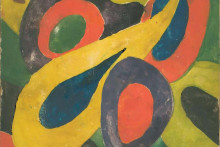
The U-M Library’s digital collections recently expanded to include an Audio and Moving Image (or AMI) digital collections interface. This post details a designer's journey in finding a banner image for the Hazen Schumacher's Jazz Revisited Radio Show digital collection.

Pressure ulcers are injuries to the skin and underlying tissue that form due to prolonged pressure. Bedridden patients are the most susceptible to these wounds, so hospital nurses need to turn them every few hours to alleviate the built-up pressure. In public hospitals like San Juan de Dios in Guatemala City, there is a high incidence of these wounds due to understaffing.
Currently, hospitals in Guatemala have egg carton foam mattresses intended to reduce the incidences of bedsores. However, even with these mattresses, patients who are not turned would still develop preliminary pressure ulcers in as little as six hours. Additionally, it is difficult for nurses in this hospital to prioritize and communicate which patients need to be turned because they use paper and pencil to track the patients. Thus, current prevention methods would benefit from engineering solutions that reduce the physical and mental demand on nurses to turn patients.
Currently, hospitals in Guatemala have egg carton foam mattresses intended to reduce the incidences of bedsores. However, even with these mattresses, patients who are not turned would still develop preliminary pressure ulcers in as little as six hours. Additionally, it is difficult for nurses in this hospital to prioritize and communicate which patients need to be turned because they use paper and pencil to track the patients. Thus, current prevention methods would benefit from engineering solutions that reduce the physical and mental demand on nurses to turn patients.
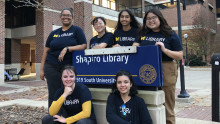
The U-M Library Student Ambassadors are a team of students who work for the library to promote library services and resources to students through targeted social media campaigns and digital exhibits, publicize and host library events that foster engagement, diversity, and inclusion, suggest ways to improve student experience by participating in meetings and focus groups with library staff, and represent the U-M Library at campus fairs and events. Their work is highly collaborative and a goal of the program is to give them the agency to make their own decisions and plans for the year. These governing principles allow for a highly creative and fun environment that results in some really great library programs each year. Here’s a reflection from four of our recent Ambassadors.
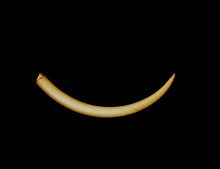
In this interview, Dr. Adam Rountrey is the Research Museum Collection Manager (Vertebrates/Plants) and 3D Specialist at the University of Michigan Museum of Paleontology (UMMP) describes his research on hormone levels in woolly mammoth and African elephants tusks. Several CT scans of these specimens are available in Deep Blue Data.

Much of our U of M community celebrates Asian American and Pacific Islander Heritage Month in April in order to be able to honor AAPI experiences while most students are still on campus, but national celebrations are just beginning with the official start of the month kicking off on May 1st. If you were too caught up in exams back in April and now find yourself having some time to read, stop by Shapiro’s 2nd floor to browse 35 selected memoirs by AAPI authors!

Do you ever wonder how much more we can know about the water that we depend on? This semester, I was involved in a Student Engagement Fellowship with the U-M Library on the Huron River named A River Runs Through Us. The Huron River Watershed, which serves as a vital resource for our community and the University of Michigan in Ann Arbor, is currently facing a multitude of challenges, including but not limited to a creeping dioxane plume and regular wastewater releases, making it ever more essential for us to become more informed about these issues and take action to protect this important river. Undoubtedly, the health and sustainability of the watersheds surrounding us directly affect not only our own lives, but also the lives of the various beings and organisms that inhabit our environment. For this reason, our goal for the project is to highlight these issues as well as resources and local activists that have been doing great work to protect the river and the watershed.
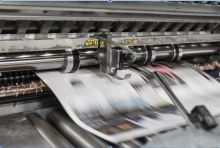
The Fake News Educational Materials Fellowship was initially conceived with the intention of researching fake news, misinformation, and disinformation within journalism in a range of areas: the psychological and socio-economic causes of the creation and circulation of fake news; data literacy and determining credibility; and bias in news reporting, analysis, and selection.
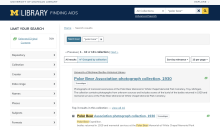
After the successful launch of our ArcLight finding aids application on April 19, 2023 - and the deprecating of our homegrown Digital Library eXtension Service (DLXS) finding aids application - we are sharing our reflections on the project with the wider community. This blog post will describe the history of finding aids at the University of Michigan Library and what led us to develop the ArcLight finding aids application, starting in earnest in 2020. We will describe our goals for the project, the organization of the development team, and the modifications that we needed to make to effectively complete the project. We will give an overview of what a finding aids application does, and why we decided to use ArcLight as well as Docker and Kubernetes as our new containerization and hosting solution. We will discuss what was advantageous to us for this project as well as what was particularly challenging, and sum up what we learned from our archives partners and end-users, throughout the project.
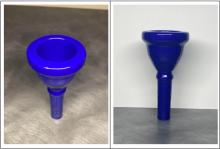
In search of an inexpensive and personalized option for a Tuba mouthpiece, a student uses a 3D printer to make one herself to get her passion up and running again.

Join us on Thursday, 11 May 3-5 pm for a panel honoring the impact of collector, donor, and adjunct curator Janice B. Longone (1933-2022) through her work building the renowned Janice Bluestein Longone Culinary Archive (JBLCA). The JBLCA encompasses more than 25,000 items including 19th and early 20th century cookbooks, charity cookbooks, immigrant cookbooks, food-related advertising ephemera, and restaurant menus.